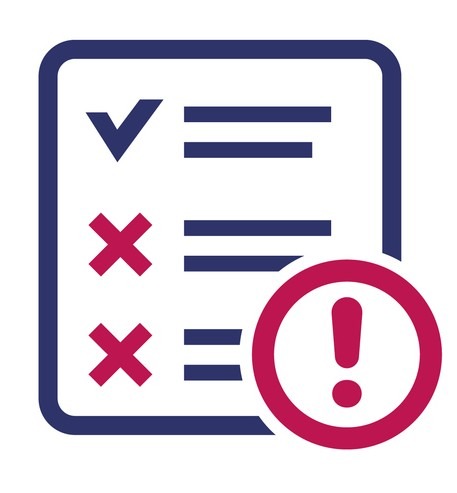In this edition of The State of IJs, we’re spotlighting Immediate Jeopardy (IJ) citations issued to nursing homes across Pennsylvania. These citations represent the most serious level of noncompliance, where resident safety is at immediate risk. Understanding the patterns behind these citations can help providers proactively address vulnerabilities and improve care outcomes.
Areas of Noncompliance & Compliance Insights
The most frequently cited IJ deficiencies in 2025 in Pennsylvania fall under F689 Free of Accident Hazards/Supervision/Devices. Deficiencies have ranged from elopements (multiple cases), water in bathroom sinks and showers not being at a safe temperature and a transport vehicle lacking a state safety inspection, as well as resident who expressed suicidal ideation being able to obtain a disposable razor and cutting their wrist. These types of deficiencies have been discussed in prior State of IJs blogs over the last few weeks.
So where are we going today? Today we are going to review IJ citations related to the environment and nurse competencies. Let’s start with F584 Safe/ Clean/ Comfortable/ Homelike Environment.
F584 Safe/Clean/Comfortable/Homelike Environment
Environmental deficiencies are always worthy of review as they raise a provider’s awareness of potentially problematic areas, that when cited at an IJ scope/severity, gives a facility way too many penalty points. The two (2) IJs we are going to discuss were both cited at a “K” scope/severity. One was on a complaint survey, and the other was on a standard survey.
IJ Citation – F584 S/S: K (Complaint Survey)
Comfortable air temperatures were the focus of the complaint survey when air temperatures were noted between 59 to 70 degrees Fahrenheit on two nursing units – don’t even guess – of course it was in the month of February. It was determined that these temperatures placed residents at risk for developing hypothermia and these temperatures were certainly not in agreement with the policy to maintain indoor air temperatures within the required range (71-81 degrees Fahrenheit) to promote the health, safety and comfort of residents and staff.
The loss of heat was due to outside water pipes breaking and as a result, sand and debris entering the pipes and toilets, affecting their functionality – including causing the heat to go in and out. The SOD describes the layers of clothing, hats, blankets being used by the residents to stay warm. Of course, the supply of blankets was down to one and staff were complaining of being cold as well. We can also throw in that the air handler malfunctioned, and the contractor recommended shutting down the system until repairs were completed.

All the right things were done after the IJ was called, including purchasing more blankets, use of portable space heater for the short term, offering room changes to another unit, warm drinks, etc. No mention of the Preventative Maintenance Program for checks of the air handler, etc. was documented. What’s your plan for if outside water pipes break and it affects your building?
IJ Citation – F584 S/S: K (Standard Survey)
The second IJ also centers on the facility’s failure to ensure comfortable air temperatures and residents’ risk of developing hypothermia. The specific unit was very cold and:
- One room’s air temperature was 56 degrees Fahrenheit.
- Checks of multiple room heating systems indicated that the system was blowing cold air or “only slightly” warm air.
- Three rooms had heating systems that were non-functional.
Nursing had made requests for repairs via the maintenance communication system and as concerns were noted months prior, it appears that insufficient attention was given to addressing needed repairs moving into the winter season.
These two IJs are similar situations, but raise the same concerns:
- Is there assigned responsibility for maintenance to address all reported issues in a timely manner?
- How well is the facility’s Preventative Maintenance Program working?
- Do all staff know how to report building issues/concerns?
Don’t forget to pull out your plans for a Cold Weather Emergency and review them with appropriate staff and ensure you have sufficient emergency supplies.
F726 Competent Nurse Staffing
Moving away from the physical plant, let’s explore what was cited in three (3) IJ situations – all a “J” scope/severity related to F726 Competent Nursing Staff.
- The first situation involved a resident being admitted from the hospital with a Life Vest and the staff lacking the competencies and skills necessary to provide care for a resident with this device. The facility staff, based on their interview comments, clearly did not know how to care for the resident and or the device. A number of those interviewed shared that they had not received any training on the device including the RN Unit Director. An aide even admitted that they weren’t sure if the resident was allowed to take a shower.

My word of advice – never admit a resident with a device that you are not familiar with, do not know how it functions and do not know what is necessary to meet the needs of the resident. It is worth the time and effort to carefully review all hospital transfer information prior to the resident arriving with a device that the staff are not familiar with so that education and training can be provided on the policy and procedures you developed to care for the resident and any device new to your facility. Don’t be shy about asking the hospital for some training assistance.
The second F726 IJ situation also involve not having the skills and competencies necessary to care for a resident with a different medical device – this one was insulin pump. The DON was interviewed and indicated that she didn’t think the facility had a policy for insulin pumps. If anyone should know if there was a policy, it should be the DON.
The SOD notes that the discharge documents from the hospital included orders for Humulin R, a short-acting insulin, to be injected via the insulin pump. Once again, RN and LPN staff were questioned on their knowledge and skills related to an insulin pump and all indicated the lack of education. One staff member stated she only knew about an insulin pump because this LPN had a relative who had one. When questioned regarding how frequently the pump needed refilling, what type it was, what it looked, etc. no one had answers. The SOD also notes that the MDS initial skin assessment failed to indicate the presence of the insulin pump. What else?
- The nurse who admitted the resident had never been trained at the facility and had to do the admission on her own.
- When transcribing the hospital discharge transfer orders, the LPN entered the incorrect insulin type and also wrote that the insulin was to be injected subcutaneously in error, rather than refilling the pump.
- When questioned, the LPN indicated that they were unaware of the errors.
Here is where things really take a downturn. Resident was ordered to be given 90 U Humulin insulin to refill the insulin pump but had the 90 U administered subcutaneously – wrong med and wrong route. The result was that the resident was hospitalized with diagnoses of hypoglycemia and insulin overdose. This is a second lesson learned regarding admitting a resident with a device that your nursing staff does not know how to manage.
IJ example #3 related to F726 Competent Nurse Staffing is another Life Vest-associated deficiency. Correspondence from the hospital at the time of discharge clearly documented that the “patient has a Life Vest – she has it here. Will that be okay?” The facility responded that this would be fine, and the resident was admitted later that day.
Similar responses from staff were elicited regarding not knowing how the device worked, how to recharge it, can the device be taken off, as well as admitting that they had never heard of it. These responses were from both aides and licensed nurses. One staff member even shared that the facility usually does not admit residents with a Life Vest but “sometimes they sneak in.” Isn’t that something you want to hear from your staff?
The facility was fortunate that there was not a negative outcome for this resident. I should also mention that on interview with the surveyor, the DON shared that while developing a corrective action plan to remove the IJ, the facility found another Life Vest that they knew nothing about! The DON noted that hospitals do not always share information on Life Vests and the resident just arrives with it. There are so many questions about this situation, including what the admitting nursing is looking at when admitting a resident. It is worth reminding your nurses that if they see an order, notes, medical device, etc. associated with a new admission, that they must speak up and request assistance, guidance, and education to avoid a potentially negative outcome for that resident.
🚨 Concerned About Compliance? Let CMSCG Help You Stay Survey-Ready
Our expert interdisciplinary team has helped nursing homes and other post-acute providers navigate even the toughest compliance challenges with confidence. Whether you’re responding to an Immediate Jeopardy citation or proactively working to avoid them, CMSCG offers:
✅ Comprehensive mock surveys with actionable insights across all departments
🛠️ Post-survey guidance and Plan of Correction development
📈 Ongoing quality assurance reviews to keep your systems sharp and survey-ready
Let’s turn compliance into a competitive advantage.
📞 Call (631) 692-4422 or connect with our team to schedule your consultation.